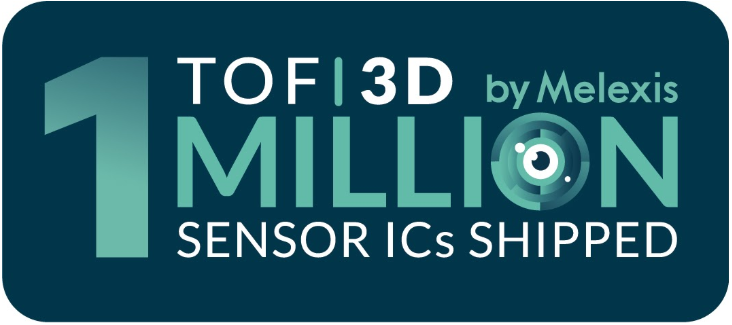Melexis 飞行时间解决方案:创新时间轴
Melexis与布鲁塞尔自由大学 (VUB) 开始合作研发 ToF 传感器。VUB 的研发团队创立了 SoftKinetic,总部位于比利时的独立公司,专门开发传感器到软件 3D 手势识别解决方案。 Melexis 继续与 SoftKinetic 展开合作。创新像素技术 DepthSense® 获得了专利。基于合作关系,Melexis 获得了独家授权,将这种独一无二的技术应用于汽车领域。
2012年
Melexis 率先推出一款针对该挑战的解决方案。
2014年
Melexis 研发的首款汽车级飞行时间 3D 摄像头 IC 开始进入量产。2015 年,第一代产品 MLX75023 的产能大幅提升,重点应用于手势识别的人机界面 (HMI)。
2018 年
第二代产品 MLX75024(与其辅助芯片 MLX73123)的抗日光干扰能力得到进一步增强,主要用于车内监测和外部应用。此外,该产品的系统效率得到进一步提高,灵敏度(又称量子效率)增加了 50%,电流消耗减少了 50%。发热量降低可以使摄像机的设计结构更加紧凑。
同一时期,Sony 收购了 SoftKinetic,将该公司重新命名为 Sony DepthSensing Solutions。保留了基于电流辅助光电子解调器 (CAPD) 像素结构的 DepthSense® ToF 像素商标。收购后,Melexis 将授权范围扩展到除汽车安全性和信息娱乐之外的其他应用领域。另外,Sony 和 Melexis 的合作还促成了全新系列的汽车 ToF 传感器 IC,即第三代 Melexis 汽车 ToF 传感器 IC。Melexis 负责进行稳健的产品设计、封装、车规测试和认证。
2019 年
Melexis 推出第三代 ToF 的首款产品单芯片 VGA ToF 图像传感器芯片 MLX75027。这款芯片能够创建完整的车内三维图像,可以监测人员和物体,并实现手势检测功能。该产品还可以集成至碰撞预警和导航应用中,如检测车外空间和障碍物以及行人等。MLX75027 的主要特性之一是支持高达 100MHz 的调制频率,使制造商能够充分发挥 VCSEL(最新的激光技术)的性能,实现更高的距离精度。该设备支持高达 135 FPS 的帧率,可以检测并跟踪快速移动的物体。
2020年
第三代QVGA 飞行时间TOF芯片 MLX7026 正式发布。MLX75026集成QVGA(320x240)像素阵列,具有较小的封装和¼“光学尺寸。 它与VGA ToF传感器的高度兼容极大地促进了现有软件的重用,从而简化了高端VGA解决方案与经济高效的QVGA方案之间的迁移路径。
2021年
Melexis推出MLX75026 (QVGA)的升级版本,集成了IRBP滤波器,可简化系统中的镜头和传感器组件。
2023年
Melexis发布MLX75027 (VGA)的升级版本,支持汽车和工业领域安全应用。该产品使客户更容易进行安全集成。
 Melexis 的汽车 ToF 产品组合具有无与伦比的全面性,并将推出第三代 QVGA 产品,客户可以在精度、分辨率和集成度等方面为其系统选择最佳传感器 IC。QVGA 和 VGA 版本之间采用通用架构,具有相同的像素性能,方便现有客户轻松实现转换。同时我们还开发了一系列综合评估套件和软件,帮助设计人员在开发针对新项目的解决方案时缩短交付时间,并大幅节约成本。
Melexis 的汽车 ToF 产品组合具有无与伦比的全面性,并将推出第三代 QVGA 产品,客户可以在精度、分辨率和集成度等方面为其系统选择最佳传感器 IC。QVGA 和 VGA 版本之间采用通用架构,具有相同的像素性能,方便现有客户轻松实现转换。同时我们还开发了一系列综合评估套件和软件,帮助设计人员在开发针对新项目的解决方案时缩短交付时间,并大幅节约成本。
更多信息
如果您想了解更多 Melexis 3D 飞行时间图像传感器和软件解决方案如何优化您的汽车应用,请联系我们探讨您的具体要求。






